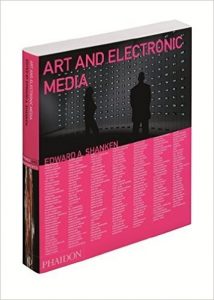Chris Henschke is a digital artist from Melbourne, Victoria, Australia. Henschke studies scientific concepts like physics, sound, ight, etc.[2] Together with Mark Boland, an Australian Synchrotron physicist, they collaborated on an exhibit called “Song of the Phenomena”, which was displayed in the Royal Melbourne Institute of Technology Gallery on November 17th, 2016.[1] “Song of the Phenomena” includes a machine that is activated by atomic radiating particles emitting from decomposing fruit. The data is then converted into sound. The machine was once used to calibrate radiation oncology treatments by the Australian Radiation Protection and Nuclear Safety Agency. It is unknown whether the machine was sold or donated to Henschke after the machine’s retirement.
This is a perfect example of a collaboration between scientist and non-scientist, or art and technology, in order to create an innovative exhibition. Boland says that Henschke “has the same level of professionalism and tenacity as an artist as a physicist does.” They both went to the University of Melbourne and have a shared interest in physics, despite Henschke going to school for Sound Design.
I believe Song of the Phenomena is classified as a “Cybernetic Device” based on the categories in Cybernetic Serendipity.[5] When I saw this piece, my first thought was “What does it do?”, as Billy Kluver would have expected someone to say. Then I realized Kluver’s point in which art explores irrationalities and possibilities rather than the actual purpose.[4] Why measure the decaying fruit? How come the readings are converted into sound, of all things? I was looking at it from an engineering standpoint when I should’ve been looking at it from an artistic one.
Much like the exhibition “Cybernetic Serendipity”, none of the visitors will know if the exhibition was created by an artist, engineer, mathematician, or architect. Instead, they are presented with the sound that the machine once made in a scientific environment, tuned to an artist’s perspective. Though the machine is now useless in a production setting, it is returned as a musical and visual art using the same concept of radiation.
The line between science and art is still a bold one. However, artists and scientist must work together in order to tap into each department’s full potential. Artists rely on an engineer’s laboratories and experiments, while engineers must rely on an artist’s insight and ability to question. In the case of Song of the Phenomena, cybernetic art would not have been explored without Henscke, while the machine would have not been created/existed without Boland’s work. The combination of Henscke insight and Boland’s work signifies a true collaboration between science and art.
Sources:
1. https://www.symmetrymagazine.org/article/art-intimates-physics
2. https://thearticle.com.au/2017/10/song-of-the-phenomena-expelling-demons-from-within/
3. https://art.rmit.edu.au/calendar/white-night-morbis-artis/rmit-morbis_artis-0067/
4. Notes by an Engineer[1967] by Billy Kluver.
5. Cybernetic Serendipity [1968] by Jasia REICHARDT
